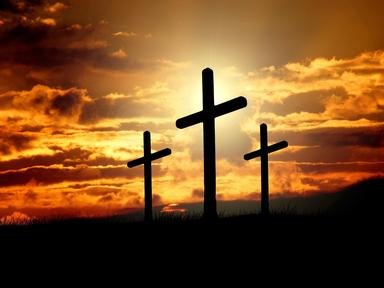Quiz Answer Key and Fun Facts
1. An easy one to start with. This bishop, of Celtic/Roman nationality by birth, is more closely associated with another country. He may be shown holding a shamrock, or prodding along some snakes with his crozier. His bishop's vestments are usually green in color.
2. This pious Italian girl, murdered in 1902 by her would-be rapist at the tender age of twelve, is shown wearing shining white robes and holding seven lilies on her arm- one for each of her wounds.
3. This early Christian martyr's feast is on February 3. Candles figure prominently in the celebration of his feast day; he is often shown holding one. Other symbols are a fish bone, which he miraculously retrieved from a child's throat, saving him from choking to death, and a pair of iron combs, with which he was supposedly tortured.
4. This apostle was a fisherman and one of the sons of Zebedee (along with St. John the Evangelist). His traditional symbol is a scallop shell.
5. This Hungarian-born princess married a German prince and was renowned for her piety and acts of charity. She is frequently depicted opening her cloak, in which she was wont to carry bread to the poor, to reveal fresh roses.
6. This 13th century Spanish monk, founder of a religious order, wears his order's traditional black and white habit. A star is usually seen on his halo; another symbol is a dog running with a torch.
7. This English archbishop is usually shown being brutally attacked by three knights, one of whom is shown striking a grievous wound to his head.
8. These two Carmelite nuns, born centuries apart, share the same name. The earlier one is shown holding a pen and a book and being inspired by a dove. The later simply carries an overflowing armload of roses.
9. Birds, animals, a wolf, or a descending crucifix with wings are all symbols of this much-beloved Italian friar.
10. This Byzantine empress and mother of the emperor Constantine is usually shown standing next to (or kneeling in veneration of) a full-sized cross.
11. One of the patron saints of Paris, this martyred French bishop is often shown holding his severed head in his hands.
12. This saint, whose name is practically synonymous with charity, is often shown standing in the snow with his arm around a poorly clad child or a pair of children.
13. A plaza in Europe bearing this saint's name is watched over by a statue of a lion, his principal symbol.
14. This early desert father is often depicted nearly naked in the desert contemplating a skull or a book and accompanied by a lion. Paradoxically, other paintings depict him richly dressed in the red satin robes of a cardinal.
15. This French bishop is often shown on horseback cutting his riding cloak in half to share with a naked or meagerly clad beggar.
Source: Author
jouen58
This quiz was reviewed by FunTrivia editor
thejazzkickazz before going online.
Any errors found in FunTrivia content are routinely corrected through our feedback system.


